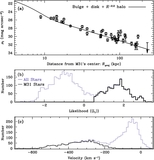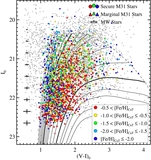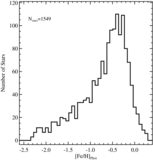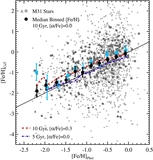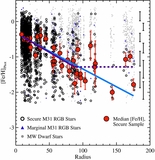Image Details
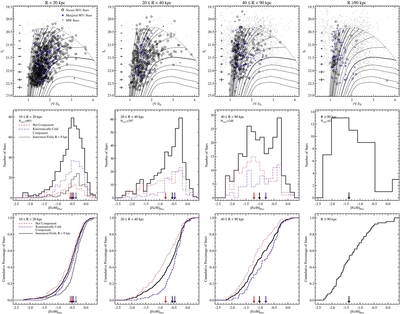
Caption: Figure 7.
Properties of the stellar population of M31's halo in four radial ranges (Section 4.1). The top row shows the location of M31 stars (circles: secure, triangles: marginal) and MW contaminants (gray dots) in the CMD, with theoretical isochrones overlaid as in Figure 3 (10 Gyr, [α/Fe] = 0; VandenBerg et al. 2006). The mean photometric errors as a function of magnitude are shown on the left of each panel. The stellar population gets noticeably bluer as the distance from M31's center increases. The middle and bottom rows show the MDFs measured by comparison of the star's location on the CMD to the isochrones. MDFs are shown for all secure M31 stars that lie within the isochrone grid (black curves). M31's stellar halo becomes increasingly more metal-poor on average as the projected distance from M31's center increases. In the first three radial bins, some of the fields have kinematically identified tidal debris features (Section 4.1.1). The red-dashed curves show the MDF of stars that are most likely to belong to the kinematically hot population while the blue-dotted curves show the MDF of stars that are most likely to belong to tidal debris features. Arrows show the median [Fe/H] for each MDF. On average, the dynamically cold tidal debris is more metal-rich than the dynamically hot halo population, and has a significantly smaller tail to lower metallicities.
Copyright and Terms & Conditions
© 2014. The American Astronomical Society. All rights reserved.



